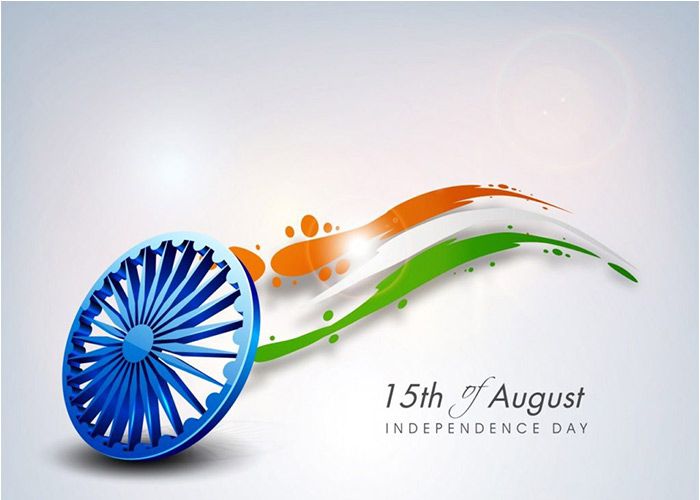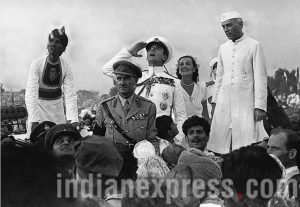
Independence day is an annual national festival celebrated to commemorate India’s independence from British Rule on 15 of August in 1947 after 200 years of slavery. This day is the re-birth of India, when the British Empire left India and handed over the country to its leaders. It is the most significant day in the history of India and celebrated every year with great enthusiasm by the Indian people.
The Indian subcontinent was an outpost for the European traders during the 17 century. The British East India Company ruled the Indian subcontinent by having a big military presence. During the 18th century, the British East India Company established their local kingdoms and effective forces all throughout India. In 1857 the people of India started a great independence revolution against the British rule.
British historians called it the Sepoy Mutiny, Indian historians named it The Revolt of 1857 or the First War of Indian Independence. It was started against the British East India Company’s army at Bengal Presidency on the May 10 in 1857. The Revolt of 1857 begun in Meerut by Indian troops (sepoys) in the service of the British East India Company and it quickly spread to Delhi, Agra, Kanpur, and Lucknow. In India it is often called the First War of Independence.
The Revolt of 1857 was an effective rebellion after which various civic societies were emerged all across the India. One of them was the Indian National Congress Party which formed in the year 1885.
After World War II, Indian freedom fighters continued fighting for Independence and then Britain decided to free India from their rule. Hindu Muslim violence took place after the independence of India which separated India and Pakistan. Muhammad Ali Jinnah became the first Governor General in Karachi Pakistan. Pandit Jawaharlal Nehru became the first prime minister of independent India. An official ceremony was held in the capital of the country, Delhi, where all the great leaders and freedom fighters (Master Tara Singh, B. R. Ambedkar, Abul Kalam Azad, etc.) took part to celebrate freedom.
Pundit Jwaharlal Nehru was the first Prime Minister of India, a leading figure in the Indian independence struggle and the process of political development in the country post-independence. Pundit Nehru was home tutored and later went to England to finishe his education in law. Pundit Nehru, on returning to India, had enrolled himself as an advocate at the Allahabad High Court. However, his career in law was short-lived and he soon became extensively involved in the independence movement. As President of the Indian National Congress, Nehru had called for complete independence from the British Raj in 1929. As prime minister of independent India, Nehru had initiated socio-economic policies of the idealistic socialist kind. During his prime ministerial tenure, Pundit Nehru mentored his daughter Indira Gandhi in political affairs. In 1957, Indira Gandhi was elected as the Prime Minister.

India’s first Prime Minister Jawaharlal Nehru addressing the nation from the ramparts of Red Fort. (Photo: Express Archives)
The Constituent Assembly of India met for its fifth session at 11pm on 14 August in the Constitution Hall in New Delhi. The session was chaired by the President Rajendra Prasad. In this session, Jawaharlal Nehru delivered the Tryst with Destiny speech proclaiming India’s independence.
Long years ago we made a tryst with destiny, and now the time comes when we shall redeem our pledge, not wholly or in full measure, but very substantially. At the stroke of the midnight hour, when the world sleeps, India will awake to life and freedom. A moment comes, which comes but rarely in history, when we step out from the old to the new, when an age ends, and when the soul of a nation, long suppressed, finds utterance. It is fitting that at this solemn moment, we take the pledge of dedication to the service of India and her people and to the still larger cause of humanity.

This rare 1947 photograph provided by the Ministry of Defence shows Lord Mountbatten, Edwina Mountbatten and Jawaharlal Nehru at the first Independence Day celebrations in New Delhi (Photo: Express Archives)
On 15 August 2017, India will mark its 71st Independence and pay tribute to and remember all the freedom fighters who fought for its independence. The national flag will be hoisted by Prime Minister Narendra Modi in a ceremony held in the nation’s capital, New Delhi.
The tricolours of the flag represents courage and sacrifice (saffron/orange), peace and truth (white) and faith and chivalry (green). The Ashoka Chakra in the centre of the flag is a depiction of the Buddhist Dharmachakra, represented with 24 spokes distributed evenly.
Following the flag hoisting, a 21-gun military salute shall be given, accompanied by helicopters flying overhead. Foreign ambassadors and dignitaries will also participate in the celebrations, and will be welcomed by a military band playing the national anthem. The Prime Minister will greet the ambassadors seated at the parapet and deliver a speech that will be telecast to the general public.
The kite-flying sport in India symbolizes the Independence Day. The sky all over India becomes full of countless kites (flown from rooftops) of various sizes, shapes, styles, and shades.
Indian Australians call Parramatta their home and Harris Park is also known as a Little India. The Federation of Indian Associations of NSW (FIAN) is organising INDIA DAY to celebrate India’s Independence Day on Saturday, 12 August, 2017 in Parramatta Park.
Neera Sahni, Research Services Leader, City of Parramatta, Parramatta Heritage Centre, 2017
References:
http://sourcebooks.fordham.edu/halsall/mod/1947nehru1.html “Jawaharlal Nehru (1889–1964): Speech On the Granting of Indian Independence, August 14, 1947” Retrieved 8 August 2017
https://en.wikipedia.org/wiki/Tryst_with_Destiny Retrieved 8 August 2017
http://www.historytoday.com/benjamin-zachariah/gandhi-non-violence-and-indian-independence Retrieved 9 August 2017
http://www.historydiscussion.net/history-of-india/the-revolt-of-1857-the-first-war-of-independence/1581 Retrieved 9 August 2017
https://www.britannica.com/event/Indian-Mutiny#toc323599 Retrieved 9 August 2017
India’s first Prime Minister Jawaharlal Nehru addressing the nation from the ramparts of Red Fort (Photo: Express Archives) Retrieved 9 August 2017 http://indianexpress.com/article/india/india-news-india/why-was-august-15-chosen-as-independence-day/
This rare 1947 photograph provided by the Ministry of Defence shows Lord Mountbatten, Edwina Mountbatten and Jawaharlal Nehru at the first Independence Day celebrations in New Delhi (Photo: Express Archives) Retrieved 9 August 2017 http://indianexpress.com/article/india/india-news-india/why-was-august-15-chosen-as-independence-day/
Independence Day (Photo: google image) Retrieved 10 August 2017 https://www.google.com.au/search?q=independence+day&safe=active&source=lnms&tbm=isch&sa=X&ved=0ahUKEwii-eC5683VAhUJ2LwKHRQLCzEQ_AUICigB&biw=1920&bih=934#imgrc=auzkGP517ZqcGM:&spf=1502408406529
Birth of India’s Freedom ( Photo: Times of India Archives) Retrieved 9 August 2017 http://timesofindia.indiatimes.com/articleshowpics/9552701.cms
https://www.parrapark.com.au/things-to-do/whats-on/india-day/ Retrieved 10 August 2017



